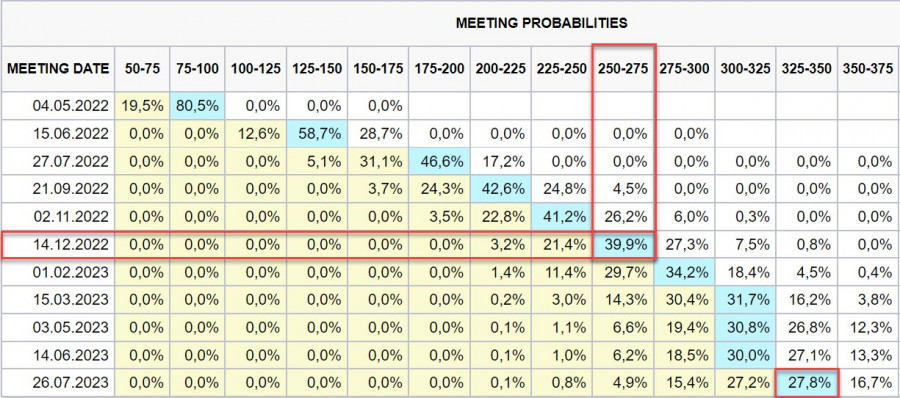
The Fed is going to tighten monetary policy even in the face of a recession. According to the minutes of its March meeting, the central bank is soberly assessing the possibility of lowering inflation through a rate hike and balance sheet reduction and is focusing on managing inflation expectations.
But the problem here is that the Fed is peddling the idea that US inflation is growing because of rising commodity prices, disruptions in supply chains and a quick post-COVID recovery that has led to higher demand, when in fact, the real reason is the uncontrolled growth of the balance sheets of the leading central banks.
Nevertheless, the latest Fed minutes indicate that the cut in balance sheet will begin in June and reach $95 billion at its peak. In a month, the rate can, if necessary, immediately rise by 0.5%, and at the end of the year, hit a range of 2.50-2.75%.
The market reaction to this news was moderate, but expectations towards the interest rate became a little tougher.

As for the balance sheet, its reduction will be equivalent to an additional increase in the rate by about 1-1.5%1%. If that is added to the forecasted rate hike, then it would reach 3.5-4.25%, which is still much lesser than the inflation rate.
All the canons of monetary policy said the rate should not be lower but higher than the inflation rate, however, the Fed could not afford this step because it would disrupt the service for public debt. If the rate rises to inflation, interest payments alone will amount to more than $1 trillion a year, which is unbearable.
Thus, the fight against inflation is now the main target, that is why the EIA decided to withdraw 240 million barrels of oil from strategic reserves. Half of the volume will be provided by the United States, the other half by other IEA member countries, which includes a significant part of European countries, Australia, Japan, South Korea, etc. This decision led to the decrease in oil prices, such as the fall of Brent below $100 per barrel.

There has been a discrepancy between inflation, rising oil prices and EUR/USD rate since 2021, but now there seems to be a break in the correlation. It seems that dollar has no grounds for growth until inflation is brought under control, but if there is, EUR/USD will dip to 1.0629.